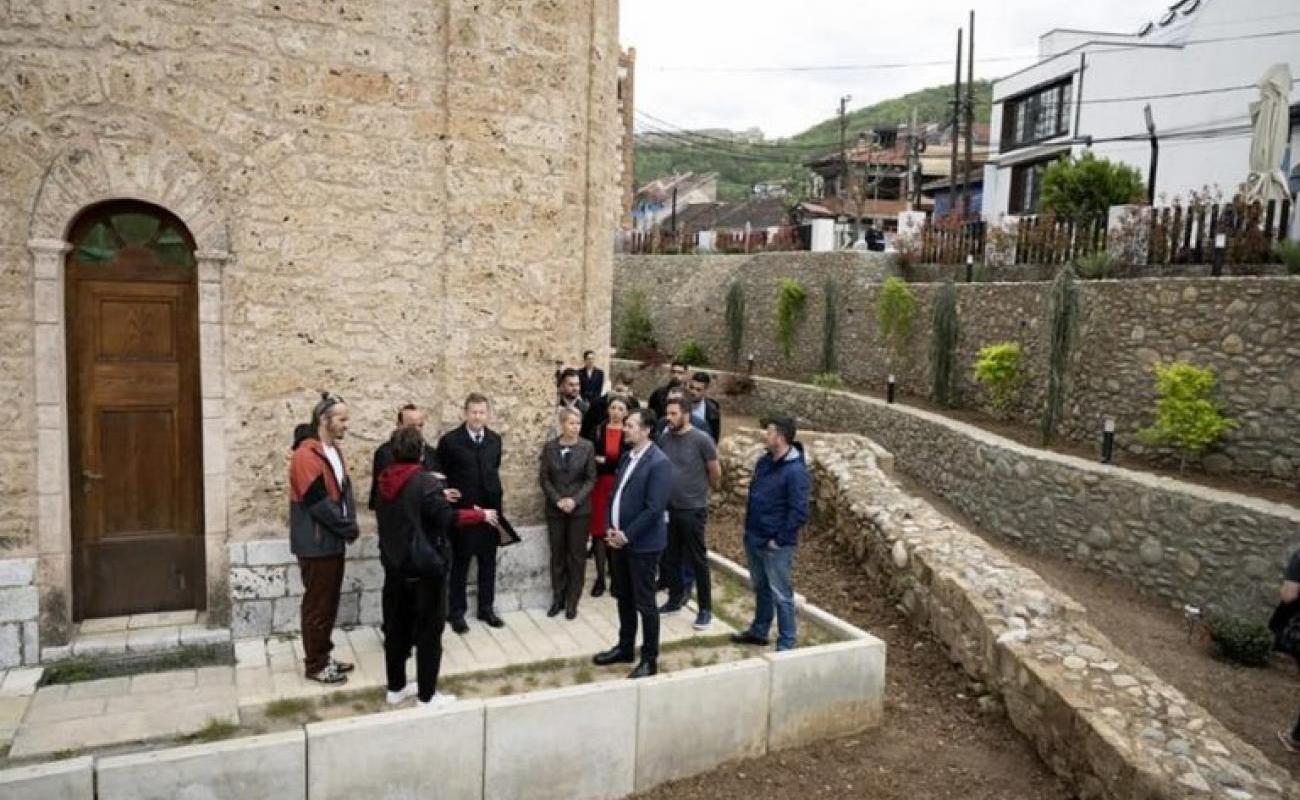European Union, Ministry of Culture, Youth, and Sports, and UNDP help preserve Kosovo’s cultural heritage

To mark the International Day for Monuments and Sites, the EU Ambassador in Kosovo, Tomas Szunyog, Minister of Culture, Youth and Sports, Hajrulla Çeku, and UNDP Resident Representative, Maria Suokko, visited in Prizren the Cathedral of Lady of Perpetual Succour and the Museum of Hydroeconomics.
Both of these cultural heritage sites are being restored through the EU Foreign Policy Instrument (FPI)-funded and UNDP-implemented project dubbed Cultural Heritage as a Driver for Intercommunity Dialogue and Social Cohesion.
“Kosovo’s rich cultural heritage is our link with the past, and our teacher for the future. It speaks of tolerance, friendship, and coexistence, all of which are much needed in the world we live in,” said Szunyog.
"Through both, its Instrument for Pre-accession Assistance founding, and the Foreign Policy Instruments, the EU has helped restore 56 cultural heritage sites including, among others, mosques, churches, archaeological and cultural sites, and museums, and we will continue contributing to preserving Kosovo’s cultural heritage for all its communities and generations to come.”
Both visited sites in Prizren are on the MCYS’ lists of protected cultural assets. The Cathedral was built in the late 19th century by Dario Bucciarelli, Archbishop of Skopje, during the Ottoman Empire and has been the main religious site of the Catholic community for the Prizren region, while the Hydroelectric Power Plant was built between 1926 and 1928 supplying Prizren with electricity up to 1973. In 1979, it was transformed into the Museum of Electricity.
“We are very grateful and committed to enhance our partnership with international partners, to join forces for protection of Kosovo's cultural heritage. Protection through physical interventions is very important, but it is not sufficient, thus we need to work a lot in making sure that we provide necessary resources and capacities to develop management models that will bring our monuments to life and make sure they serve the community first and foremost but others as well.
We are happy to provide additional financial support for this joint programme, to join forces also in financial means to make sure that all the conservation works are concluded in a professional manner. In addition to physical interventions, we should work closely in functioning of the cultural heritage, in order to bring them closer to communities and ensure their transmission to future generations." said Minister Çeku, emphasizing the importance of the restoration of cultural heritage sites.
While the restoration works on the Cathedral are completed, the works on the Museum of Hydroeconomics are still ongoing.
“Over the past seven years, jointly with the EU and the Ministry of Culture, Youth and Sports, we have uncovered the beauty of cultural and religious heritage sites throughout Kosovo. Through restoration and rehabilitation, we have given them a new lease of life. More importantly, we have brought communities together to appreciate their differences but also to celebrate their shared past through intangible cultural heritage – through books, music, crafts, and tales. Looking forward, we are embracing the digital opportunities, by working with young people with innovative ideas on preservation and promotion of cultural heritage. We are happy to contribute to a better, brighter, joint future for Kosovo’s communities” said Maria Suokko, Resident Representative of UNDP Kosovo.
Catholic Church representative, Don Zef Shani, and representatives of the Regional Centre for Cultural Heritage in Prizren, and of the Archaeological Institute of Kosovo, joined the visit and expressed their gratitude for the EU's support of the preservation of Kosovo's many important cultural heritage sites.
